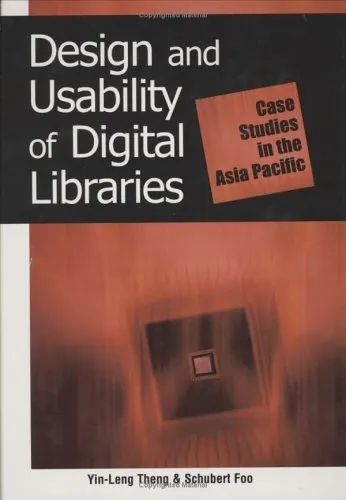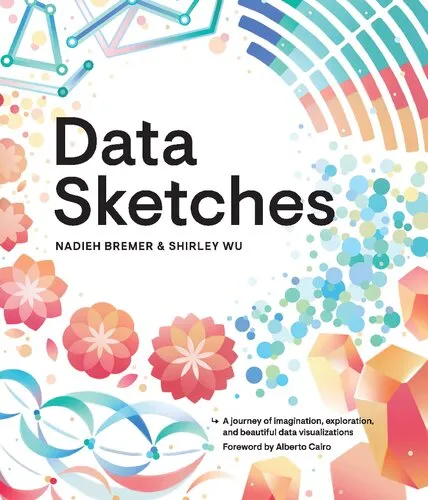Design and Usability of Digital Libraries: Case Studies in the Asia Pacific
4.0
Reviews from our users

You Can Ask your questions from this book's AI after Login
Each download or ask from book AI costs 2 points. To earn more free points, please visit the Points Guide Page and complete some valuable actions.Related Refrences:
Introduction to "Design and Usability of Digital Libraries: Case Studies in the Asia Pacific"
Digital libraries have transformed the way we access, store, and interact with information. In the rapidly advancing technological landscape of the Asia Pacific region, these libraries have emerged as critical platforms for education, research, and community engagement. "Design and Usability of Digital Libraries: Case Studies in the Asia Pacific" serves as a pivotal guide, exploring the intricate relationship between design principles, usability, and the unique cultural and technological contexts of the Asia Pacific.
Authored by Yin-Leng Theng and Schubert Foo, this book provides a comprehensive exploration of digital library design and usability through detailed case studies. It delves into the challenges, solutions, and best practices that are transforming digital libraries in the region. From tackling the nuances of user behavior to implementing cutting-edge technology, the book captures a holistic view of how digital libraries can better serve diverse communities.
Summary of the Book
"Design and Usability of Digital Libraries: Case Studies in the Asia Pacific" critically examines the evolving landscape of digital libraries in one of the most diverse and rapidly developing regions of the world. The book employs a case study approach to analyze real-world implementations and discuss the lessons learned.
The authors begin by discussing foundational concepts of digital libraries, highlighting their significance in today's knowledge-driven societies. The book moves on to explore usability testing frameworks, design methodologies, and user experience strategies specifically crafted for diverse populations across the Asia Pacific. Special attention is paid to factors such as multilingual content, varying levels of technological literacy, and differing expectations of user interfaces.
Each case study in the book provides a practical perspective on how digital libraries can be designed to meet user needs effectively. Topics range from incorporating cultural authenticity into design to addressing infrastructural challenges in underdeveloped areas. The book concludes by synthesizing insights from the case studies, offering actionable recommendations for library practitioners and researchers.
Key Takeaways
- Digital libraries must prioritize usability to ensure accessibility for all user demographics, particularly in diverse regions like the Asia Pacific.
- A user-centered design philosophy is critical for the optimal adoption and long-term success of digital libraries.
- Case studies illustrate that cultural and linguistic considerations dramatically influence design choices and user satisfaction.
- The integration of emerging technologies, such as AI and machine learning, provides immense potential for improving digital library systems.
- Collaboration between technologists, librarians, and policy makers is vital for sustaining and enhancing digital library ecosystems.
Famous Quotes from the Book
"The essence of a successful digital library lies not only in its repository of resources but in its ability to connect users with the information they seek in intuitive and meaningful ways."
"Usability is not just a feature; it is the foundation upon which digital libraries must be built to ensure sustainable growth in an ever-evolving digital landscape."
Why This Book Matters
As the digital age progresses, information accessibility has become a cornerstone of equitable societal development. Digital libraries serve as gateways to knowledge, breaking down barriers imposed by geography, language, or socioeconomic status. However, designing these libraries to be truly effective requires attention to usability, cultural relevance, and technological innovation.
This book matters because it addresses these critical issues head-on. Its case studies from the Asia Pacific region offer insights that are both globally relevant and contextually specific, setting it apart from more generalized digital library literature. By focusing on practical implementations and offering actionable recommendations, the book has become an invaluable resource for educators, researchers, policymakers, and technologists.
Moreover, the Asia Pacific serves as an ideal testing ground for digital library innovation due to its diversity and the rapid pace of digital infrastructure development. This makes the lessons learned from this region particularly relevant to global audiences seeking to improve digital library design and usability.
Free Direct Download
You Can Download this book after Login
Accessing books through legal platforms and public libraries not only supports the rights of authors and publishers but also contributes to the sustainability of reading culture. Before downloading, please take a moment to consider these options.
Find this book on other platforms:
WorldCat helps you find books in libraries worldwide.
See ratings, reviews, and discussions on Goodreads.
Find and buy rare or used books on AbeBooks.
1426
بازدید4.0
امتیاز0
نظر98%
رضایتReviews:
4.0
Based on 0 users review
Questions & Answers
Ask questions about this book or help others by answering
No questions yet. Be the first to ask!













